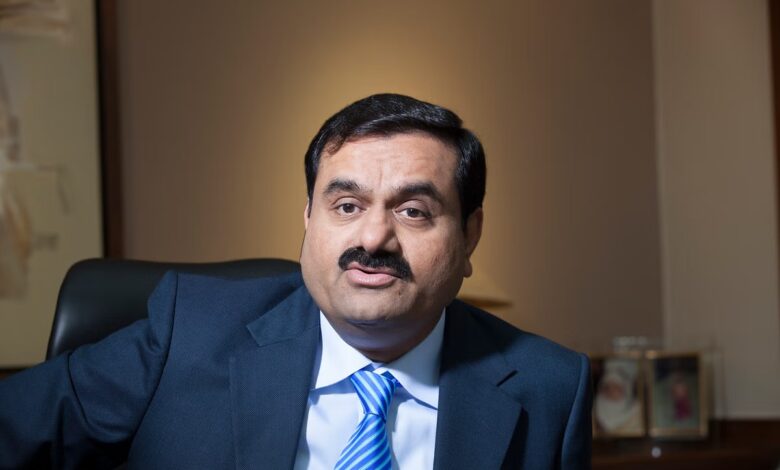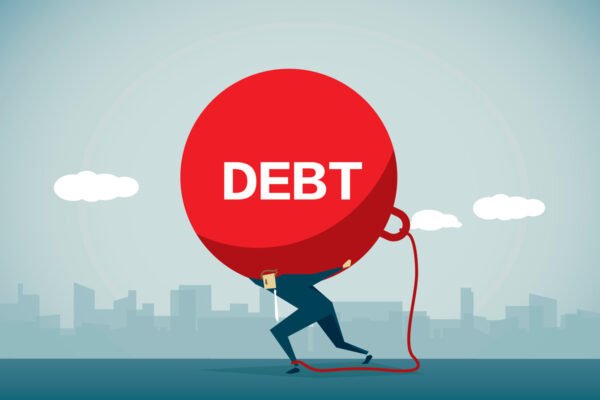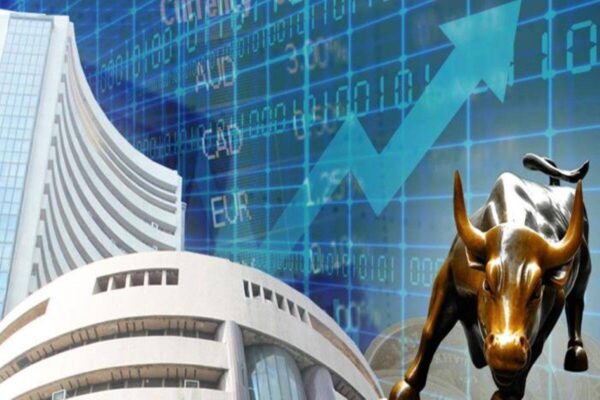Is The Dream Run Of Debt-Loaded Adani Enterprises Over?

Is the Dream Run of Debt-Loaded Adani Enterprises Over?
The Adani (NS: APSE) Business, one of the most prominent conglomerates in the nation, has lately made news after a credit rating agency, Fitch Ratings, claimed that the group is highly overleveraged because it has been entering new industries with high debt levels and little expertise.
One of the group companies, Adani Enterprises (NS: ADEL), has obtained INR 12,770 crores from SBI (NS: SBI) for the construction of the Navi Mumbai airport. The company also received a loan of INR 6,000 crores for the first phase of its greenfield copper refinery project in Gujarat.
The company’s total liabilities were INR 74,657.99 crores as of FY22, more than doubling from INR 32,706.71 crores in FY21. At the conclusion of FY19, the liabilities were as low as INR 27,392.47 crores.
Recently, CreditSights, a division of rating agency Fitch, attracted attention when it said that the Adani Group is “deeply overleveraged” and that, in the worst-case scenario, it might default.
The report’s information led to a decrease in the price of the listed firms belonging to the Adani Group on Wednesday. During the first part of the trading day, it caused a wipeout of Rs 94,000 crores ($10 billion) in the group’s stocks.
The Adani Group has been one of the best value generators on the Indian stock market for the previous five years, according to its stocks. Despite the uproar, the group’s massive debt has garnered notice before. Concern over the debt has been highlighted by Adani Group investors, and it is regularly politicized.
The Hunger for Expansion

The Adani Group has been on a growth binge in recent years, and its preferred method of growth has been acquisitions. All of its arms in the port, airport, and energy sectors have expanded through risky acquisitions, with the exception of the latest mega-deal in the cement sector.
Even after the addition of the ports of Dhamra, Abott, Krishnapatnam, and Gangavaram, the original Mundhra port is still the company’s most valued possession. The corporation then purchased the whole debt of Mumbai International Airport Limited, the company in charge of administering the Mumbai Airport, as well as a majority stake in it.
The consortium was successful in obtaining the Rs 12,770 crore credit necessary to build the projected Navi Mumbai Airport, and the State Bank of India agreed to underwrite it.
The largest renewable energy company in India, SB Energy Limited, was purchased by Adani Green Energy, the company’s renewable energy division, for $3.5 billion in cash.
The higher growth has caused the gross debt to rise from approximately Rs 1 lakh crore in FY16 to 2.2 lakh crore in FY22, an increase of 12% annually during that time. The group’s hunger hasn’t yet been satisfied, though.
Over the past year, the group has made a number of announcements regarding its ambitions to enter a number of industries, including media, data centres, petrochemical refining, green hydrogen, copper refining, and aluminium refining. These goals go hand in hand with its previously stated intentions to grow its current businesses.
The group’s existing operations and any new ventures it proposes to undertake to require a significant amount of capital, and financing them with outside capital is unavoidable (mainly debt).
Utilizing additional leverage to enter unrelated businesses could be negative for the group because it already has a lot of leverage.
Putting the Debt in Perspective
At the end of the fiscal year 2022, the Adani group’s listed companies had a combined gross debt of almost Rs 2.2 lakh crores (FY22). The amount should be viewed in context even though, on an absolute basis, it appears to be rather high.
Reliance Industries Limited and the Adani Group can be contrasted in terms of size and emphasis on asset-heavy companies. Additionally, both companies are branching out into related industries.
Reliance’s gross debt was estimated to be approximately Rs 3 lakh crores at the end of FY22. Even though Reliance has a greater overall debt load, it also seems to have a greater capacity for loan repayment.
It reported an operating income of Rs. 1.1 lakh crore, which can be used to assess the business’s cash flows. As a result, the ratio of gross debt to operating income is a comfortable 2.7 times.
In contrast, the Adani Group had a 6.6 times operating ratio at the end of FY22, with an operating income of roughly Rs 33,000 crores.
In terms of its capacity to pay interest, Reliance performs noticeably better than Adani Group – its operational revenue to interest expenditure ratio is 7.58 times higher than Adani Group’s ratio of 2.2 times.
The only other business conglomerate with a market capitalization equivalent to that of Adani Group and Reliance is the Tata Group, whose financial discipline has led to relatively manageable debt gearing.
The gross debt to operating income ratio continues to be rather high, even when one takes into account the fact that Adani Group is investing in Capex for future expansion. Even though Reliance invested a lot of money in capital expenditures on the brand-new Jio Platforms company, the same ratio reached a peak in FY17 at 4.69 times.
Is the Debt-fueled growth alarming bells?

The Adani group has grown quickly over the years without ever experiencing any significant financial issues or going into default on a debt. It also has extremely important infrastructure assets that generate reliable and steady cash flows, protecting the company against volatility in the generation of cash flows.
Expansion and new projects were financed using the money from the bank loan. Therefore, two important factors affecting the group’s solvency would be the profitability of the asset after construction or acquisition and the gestation period of new assets.
To allow debts to be carried over until the new Greenfield assets are fully operational, the group must be able to raise the necessary funds.
Due to its strong relationships with banks and reputable status in the capital markets, the company has raised money successfully. In addition, despite difficult conditions, the team has performed admirably.
For example, despite many banks openly stating that they would not fund the project, the Australian Carmichael coal mine is currently operational. Numerous people and organizations fiercely opposed this idea.
The group’s gross debt, which is currently Rs 2.2 lakh crore, is lowered to Rs 1.72 lakh crore when liquid assets are taken into consideration. Even in these settings, the gearing ratios are still significantly higher. It substantially lowers the gearing ratios while being high. If the group can continue to raise its debt, the debt load would pose a significant problem.
Evidently, debt is used to finance aggressive expansion ambitions, and having too much debt increases the company’s duty to make interest payments, which strains its ability to remain financially viable.
The company has, though, had a remarkable run, returning a whopping 4,019.7% during the preceding five years, with the majority of the gains occurring in the previous two years alone. But as a result of Fitch’s concerns, market participants seem to have exercised caution, as evidenced by the company’s share price.
The stock has experienced a 5.9% retracement from its all-time high of INR 3,258.9 on August 19, 2022, falling to INR 3,066.3 as of today. There are a few issues that need to be resolved, even if this may not seem like much of a correction. To begin with, the stock’s volatility is currently at its highest point in more than a year. The ATR indicator can be used to determine volatility.

Regardless of direction, it displays the stock’s usual range over the most recent few periods. The 14-day ATR reading on the daily chart is at 96.73, which is the highest level since June 2021. In general, very high volatility towards the top is not a good sign.
Everyone will likely also note the stock’s extreme overbought condition, which is another problem. But to quantify it once more, during the peak of the stock, the RSI (daily, 14) soared to a high of 92.2!
Even now, let’s recall the last time there was a stock with such a high RSI value. As the stock began to decline from the high, the RSI then corrected to 70.3. A crossover below the 70-point would trigger the RSI’s traditional overbought sell signal.
The stock‘s failure to establish any support levels as it rises, despite the fact that the surge to the top was rather emphatic, is even more concerning. The demand zone that is nearest costs about INR 2,400, or roughly 21% cheaper than the CMP. If the stock drops from here, it might not finish dropping until this support level.
Edited by Prakriti Arora




